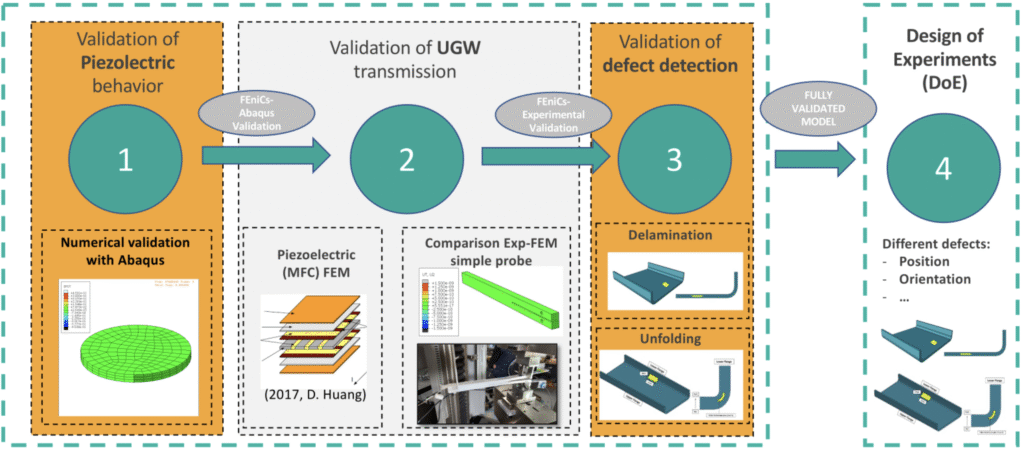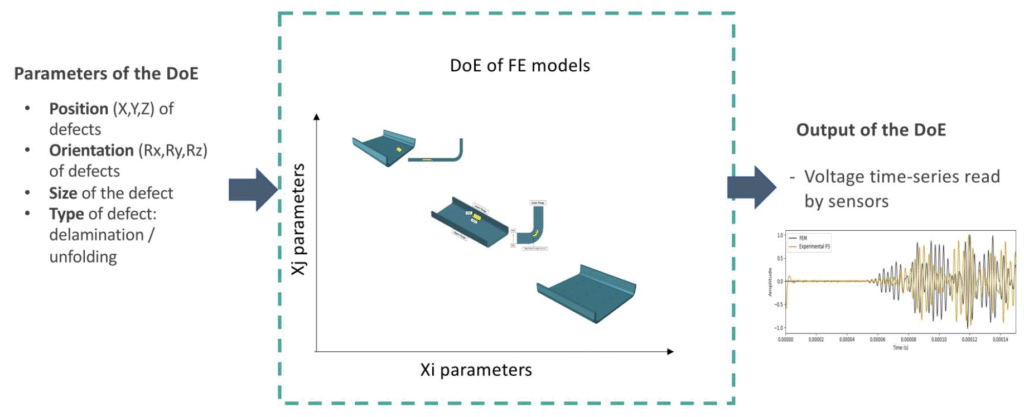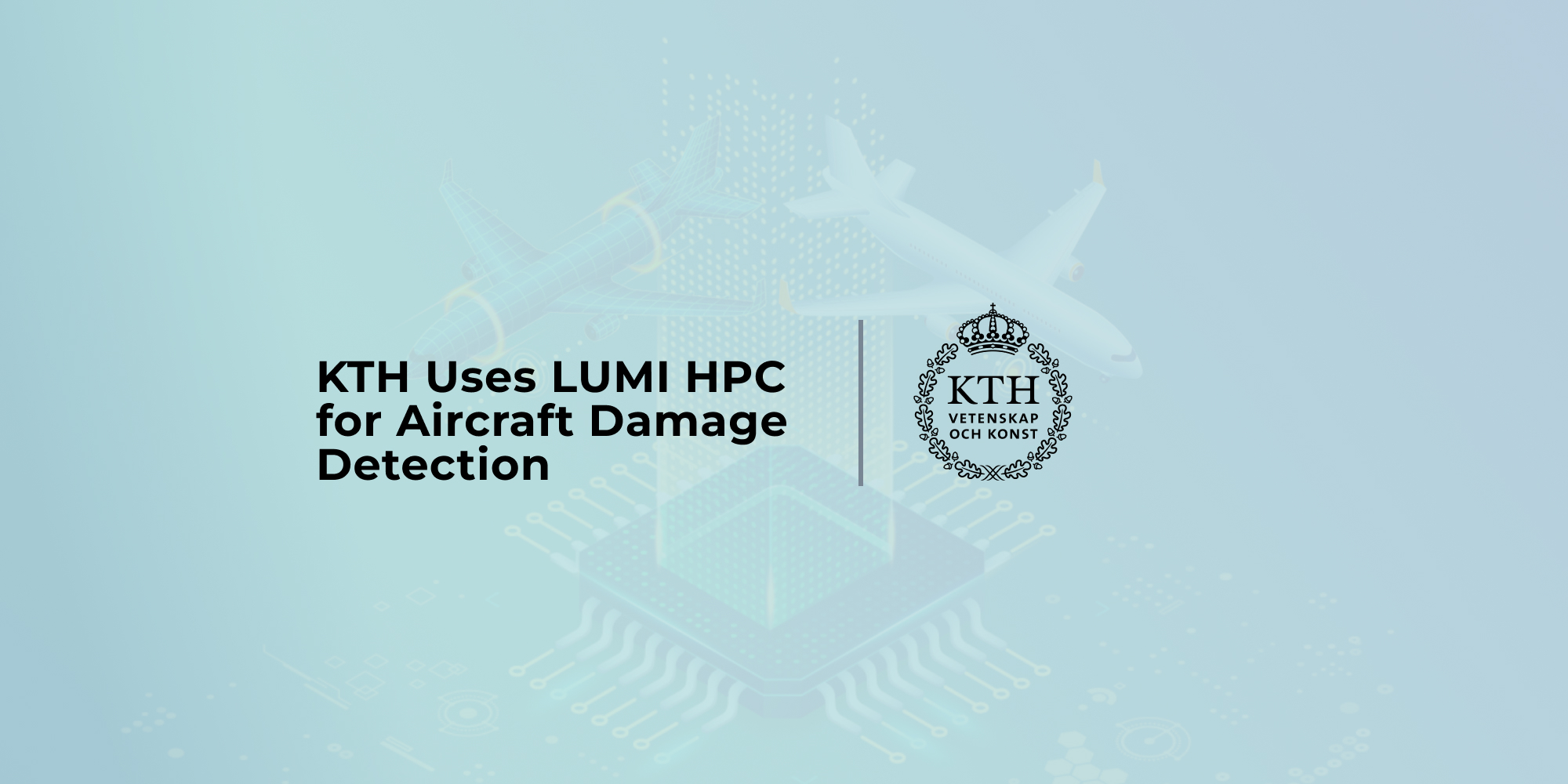Summary
KTH Royal Institute of Technology used LUMI HPC resources within the GENEX project to develop multiphysics simulations and Machine Learning models for aircraft damage detection. The project demonstrates how high-performance computing can accelerate sustainable aviation research and improve the safety and efficiency of future aircraft structures.
Organisations involved
In July 2025, KTH Royal Institute of Technology (KTH) in Stockholm received development access to LUMI HPC. The team used these resources to build data-driven modelling capabilities for the GENEX project.
The aim of this European project is to develop sustainable aviation technologies that will help achieve the EU’s environmental goals by 2050. Moreover, the project’s objectives are being achieved through the combined efforts of around 15 organizations, including KTH.
Technical/scientific Challenge
One objective of the GENEX project is to build digital technologies for an integrated health monitoring system for aircraft structures. KTH’s research team focuses on developing Machine Learning (ML) models for damage detection in aircraft composite structures. They leverage LUMI HPC for this work.
Such data-driven technologies rely on high-fidelity data to train ML models. In this case, the team generates this data through high-fidelity multiphysics simulations.
The main challenge was to develop an HPC-capable multiphysics solver and run thousands of simulations on supercomputers. Here, multiphysics refers to an engineering case involving two materials governed by different physics — aircraft structures and piezoelectric sensors.
The approach involves exciting piezoelectric sensors mounted on aircraft structures to send ultrasonic guided waves through the materials. When a structure is damaged, changes in the reflected waves’ behaviour are used to detect the damage. Therefore, capturing this variation accurately was crucial for the project’s success.
Proposed solution
KTH developed a multiphysics simulation tool for ultrasonic guided wave propagation through aircraft composite materials. The tool uses a finite element method framework via the dolfin-hpc library, derived from the open-source FEniCS project.
This simulation tool replaces commercial software with open-source alternatives that include HPC capabilities. As a result, access to LUMI HPC allowed the research team to develop and validate the simulation tool for aircraft damage detection.

Figure 1: Development and validation of multiphysics solver based on the open-source dolfin-hpc(FEniCS) library.
Impact
LUMI HPC resources enabled the KTH researchers to run thousands of multi-CPU simulations. They generated the training datasets required for the project. Consequently, this work contributes to a proof of concept for non-destructive testing technology for health monitoring of next-generation aircraft structures.
The technology will become part of digitally assisted repair processes for aerostructures. It will also positively impact aircraft safety. In addition, this work shows that the dolfin-hpc (FEniCS) framework provides an open-source, HPC-capable alternative to commercial finite element analysis tools.

Figure 2: Parameters of the training dataset. These translate to thousands of simulations corresponding to each combination of the parameters.
Benefits
Access to LUMI HPC enabled the KTH team to generate training data for their Machine Learning models within the project’s timeline. As a result, the outcomes strengthen the GENEX initiative and advance sustainable aviation research through HPC for aircraft damage detection.
Do you need more computational power for your projects?
Learn more about how you can access supercomputers for your projects for free. ENCCS can help! Visit https://enccs.se/get-supercomputer-access/








